
Conversion of a lead to a customer is extremely a hard process and it is also considered to be the most crucial part of the sales process. Without leads there’s no sales and you’re out of business. Therefore, it is important for every salesperson to understand and visualize a lead’s journey. This is done by a series of steps called a sales funnel.
This post is your guide to why you need a sales funnel and the different stages of a sales funnel that show how your lead or prospect will travel down the sales funnel to finally become your customer.
What is a sales funnel?
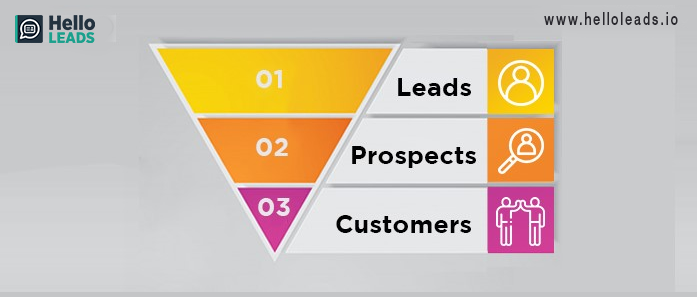
Sales funnel is a representation of the path that prospects take to become a customer. It is similar to an inverted pyramid and at the very top of the funnel, you have leads. The people who are actually interested in your product or service and who are qualified to buy move to the next stage and will be the prospect. Finally, at the bottom of the sales funnel are the persons who are interested and will actually make a purchase and become a customer.
The sales funnel and buyer’s journey are the two sides to the buying process. While closely related, the buyer’s journey is the process by which buyers go through prior to making an actual purchase. Buyer’s journey is customer- centric and it has three stages.
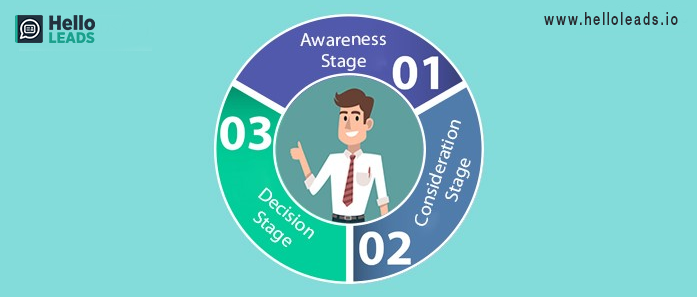
Awareness stage: In this stage the buyer becomes aware that there is a problem or issue to be resolved or an opportunity that they wish to pursue.
Consideration stage: Now the buyer looks for different products or services that are available to resolve their problems.
Decision stage: The buyer has decided on a solution for their needs.
Why is a sales funnel important?
Having a well-defined sales funnel can help you to identify each customer’s level in the funnel and you will begin to become an expert in lead generation. Sales funnel provides a useful framework through which you can analyze your business and identify areas for improvement. More importantly, it helps businesses speed up the sales process, build better relationships with leads and customers, provide a personalized approach and generate more sales.
Stages of a sales funnel
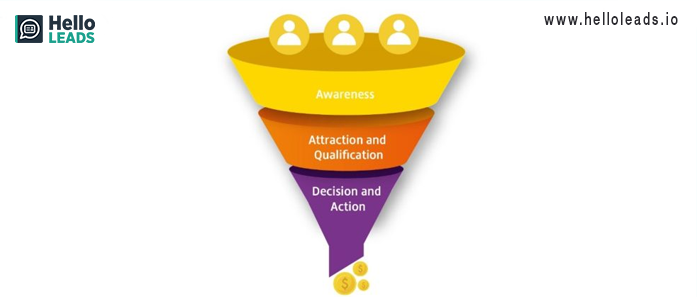
Every organization has its own way of managing the sales process. The stages may vary based on business type and sales process. A lead looking to buy your product enters the sales funnel. The stages of a sales funnel are almost exactly the same as a buyer’s journey. But, it is company-centric and the Buyer’s Journey is customer-centric. Typically, sales funnel consists of three stages:
Top of the sales funnel: Awareness
In this stage, your potential customers are researching solutions for their problems and learning about existing solution, product or service to solve their pain points.
This is when your prospect becomes aware of your business via social media posts, webinars, videos, infographics, blog posts and contacts your organization.
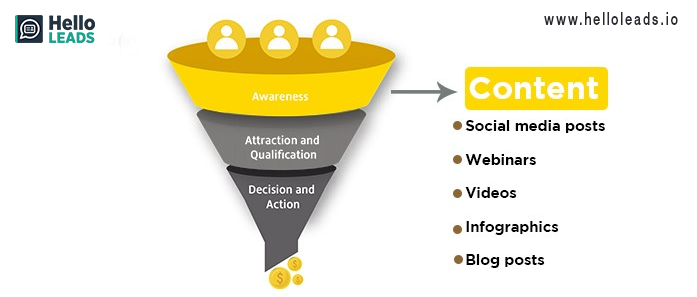
At this stage, you must educate your prospect with informative and interesting contents instead of pushing them for sale. Contents such as blog posts, videos and whitepapers will guide them through the topic that matters a lot to them.
Once your salespersons get in touch with your prospect, they are now your leads. Now it’s time for the salesperson to either initiate a call or arrange for a face-to-face meeting to ask relevant questions and to qualify your lead to bring them down the sales funnel.
Middle of the sales funnel: Attraction and Qualification
In this stage, your prospect is actively looking for solutions to their problems and ways to achieve their goals. Now your salesperson can schedule a demo call with your prospect to clearly communicate how your product or service meet their needs. During the demo, the salesperson can actively demonstrate the features and benefits of your product / service offerings connecting with their needs.
There are several methodologies to qualify a prospect including BANT (Budget, Authority, Need, Timescale), MEDDIC (Metrics, Economic Buyer, Decision Criteria, Decision Process, Identify Pain, Champion) and CHAMP (Challenges, Authority, Money, Prioritization) Sales. To qualify a prospect, you can ask questions related to budget, authority, need and timeline.
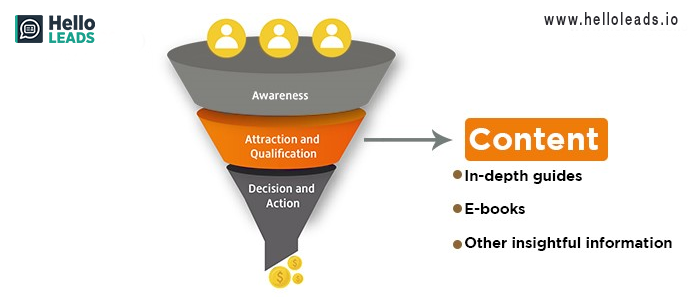
Leads who meet the qualification criteria moves down the funnel. Moving the leads down the funnel without proper qualification will affect your sales.
In this stage you can provide contents such as in-depth guides, e-books and other insightful information which will help your leads.
When the prospect finds that your product / service is the right choice for their needs, they proceed to the next stage.
Bottom of the sales funnel: Decision and Action
At this stage, the lead reaches the bottom of the sales funnel and they have decided to buy your solution. The salesperson can provide your leads with different packages and other agreements to successfully close the sales.
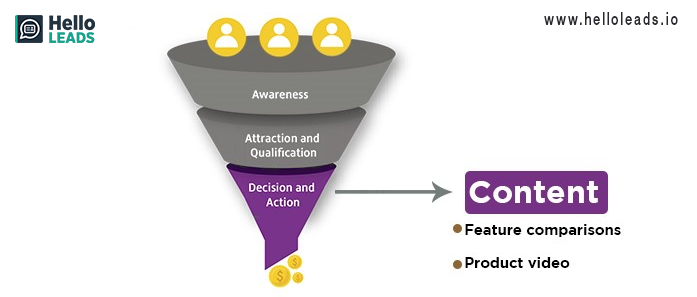
You may win or lose at this stage, but you can provide best contents (feature comparisons, product video) to reinforce their confidence in your offer and make them feel that your solution is the best fit for their problem.
When your win their business, you begin on boarding the new customer. Sometimes you may lose because of various reasons like budget constraints. You can even find the reason for your loss or nurture your prospect in future to win their business.
Example of lead stages for your small business
Each lead you add goes through certain stages, starting from a cold call or enquiry to closing the deal. You can review your leads at each stage and take appropriate action to move them to next logical stage till they become your customer. The analytics associated with the lead stage will provide you with more insights on how to drive your sales strategy effectively.
CRM such as HelloLeads provides you an option to capture and track these stages in a systematic manner.
HelloLeads for example, provides, by default, 6 pre-set lead stages for quick use.
| Stages | What the stage represents |
| Open | Lead just entered or inquiry received |
| Contacted | When you have spoken to the lead or connected by email / text message / WhatsApp |
| Qualified | When the lead has genuine needs for your product or service or you have products that can meet his / her needs. Also when you have shared a quotation or a price estimate to the lead. |
| Customer (Won) | When a lead purchases your product or service |
| Inactive | Was a customer some time back but dormant or inactive now |
| Unqualified | The needs of the prospect do not match with products or services you offer and you have decided not to follow up with this lead anymore. |
Using HelloLeads you can rename and customize these lead stages to build your own sales funnel.
Build your sales funnel right now and watch the results. A well- defined sales funnel brings more customers and increases sales conversion rates for your small business.
Share this blog :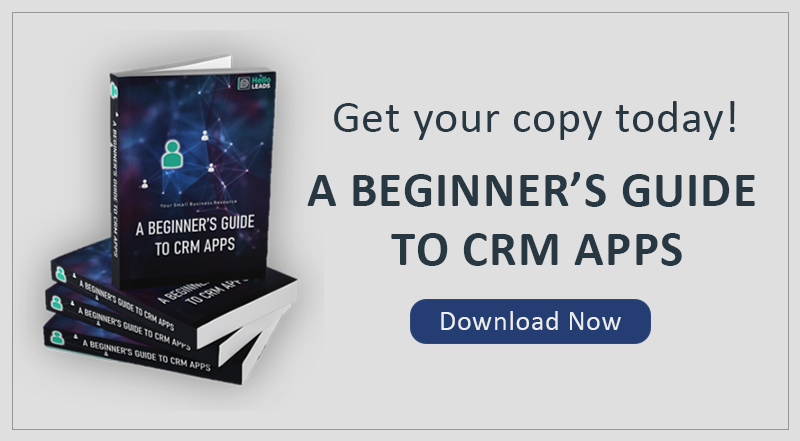

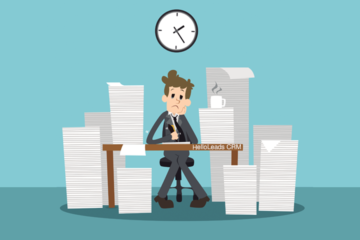










Dear Preethiya, let me congratulate you on this clear, precise, concise and useful article. Congratulations from Portugal.
SalesFunnels has been made with the plan to make it simpler for you to sell items and services on the web. And the entirety of that while expanding conversion rates and expanding income and benefit. And all of that while maximizing conversion rates and increasing revenue and profit.